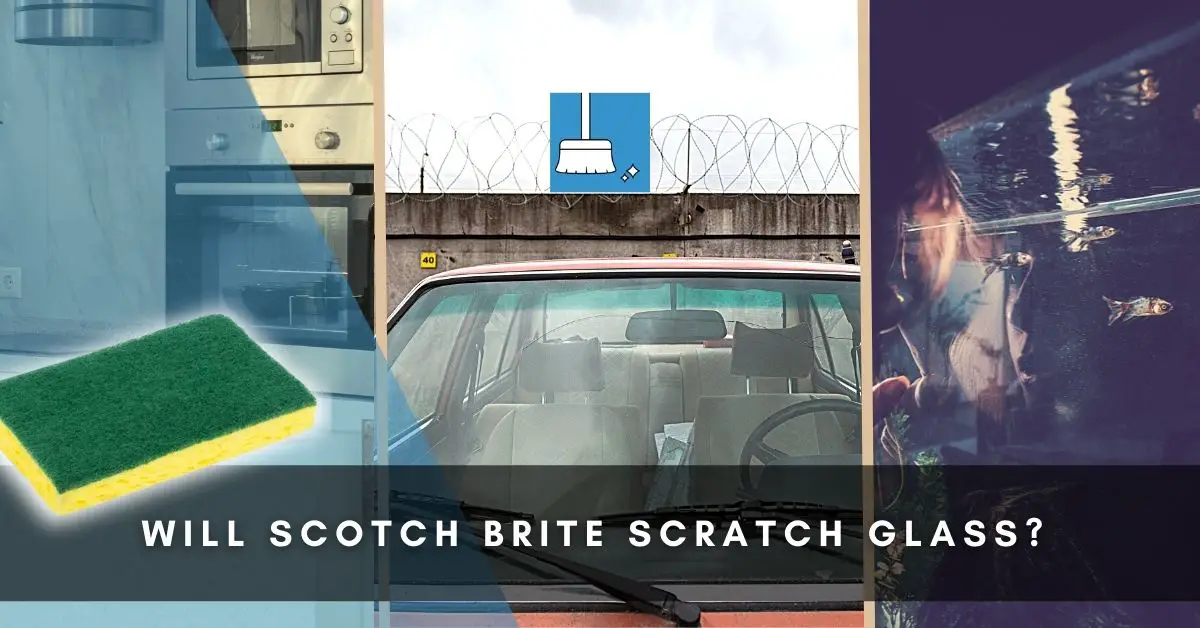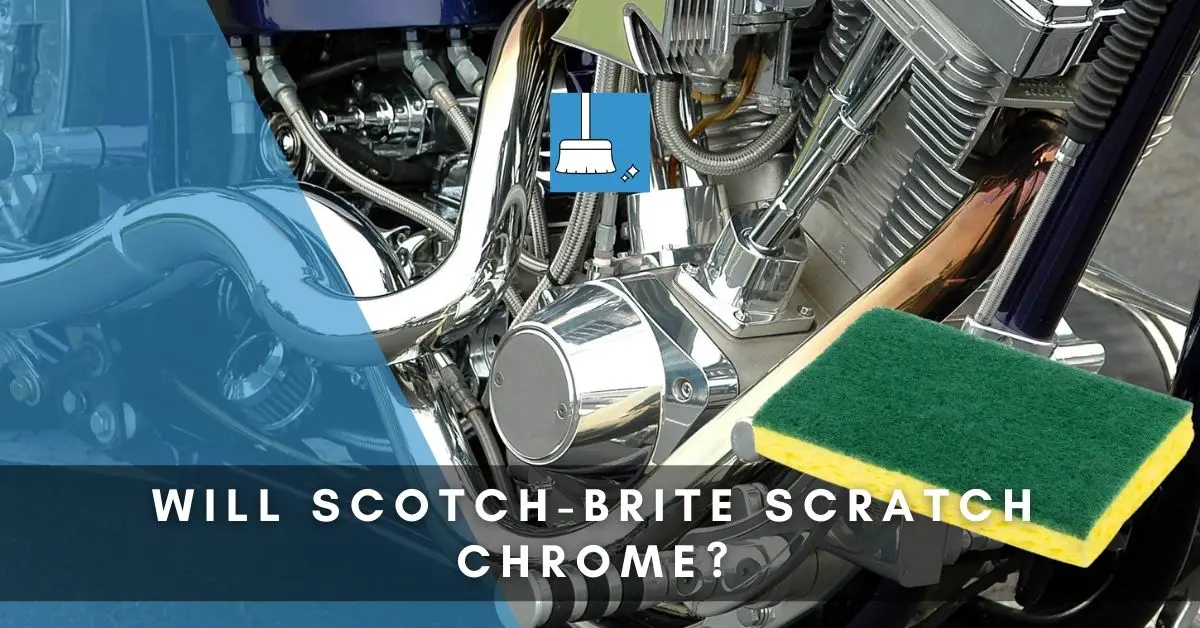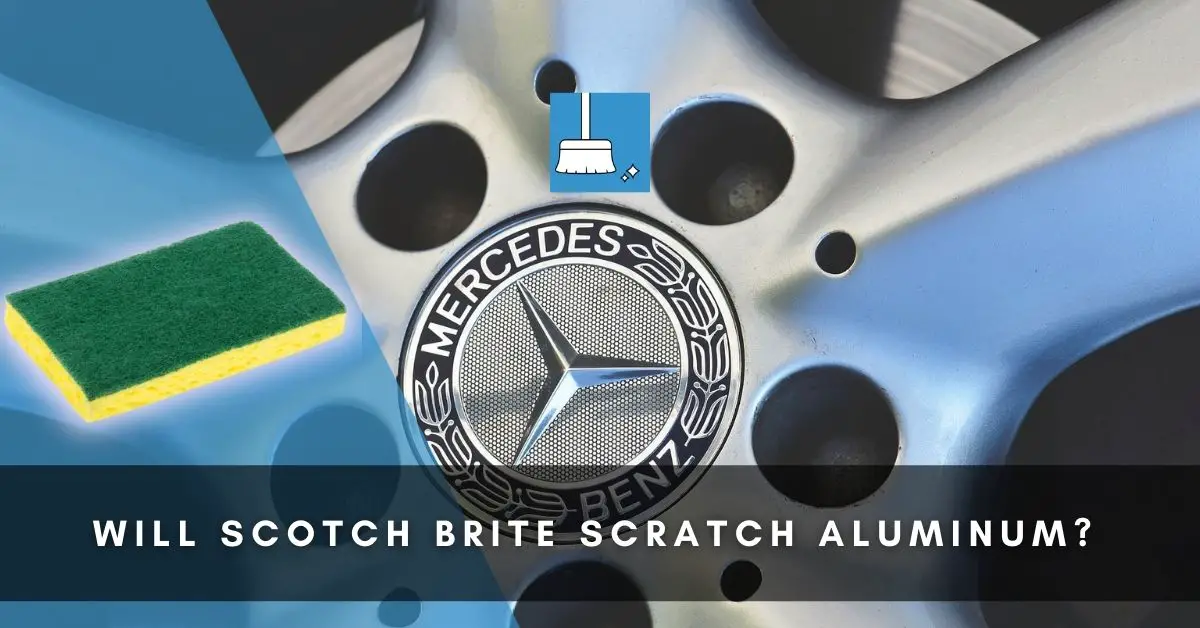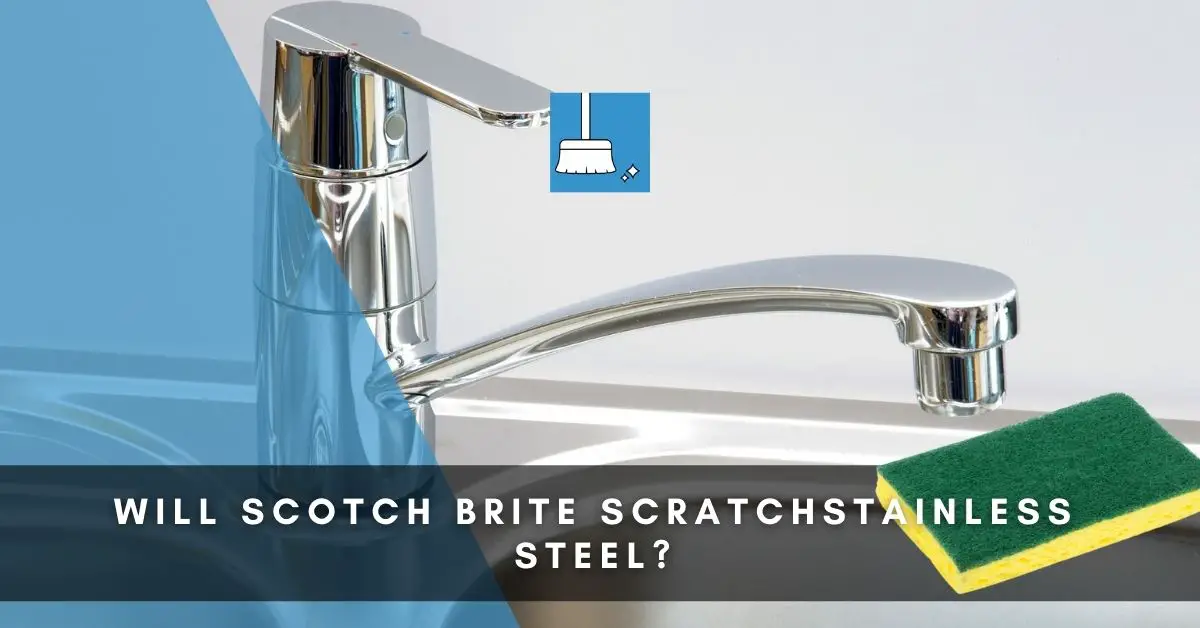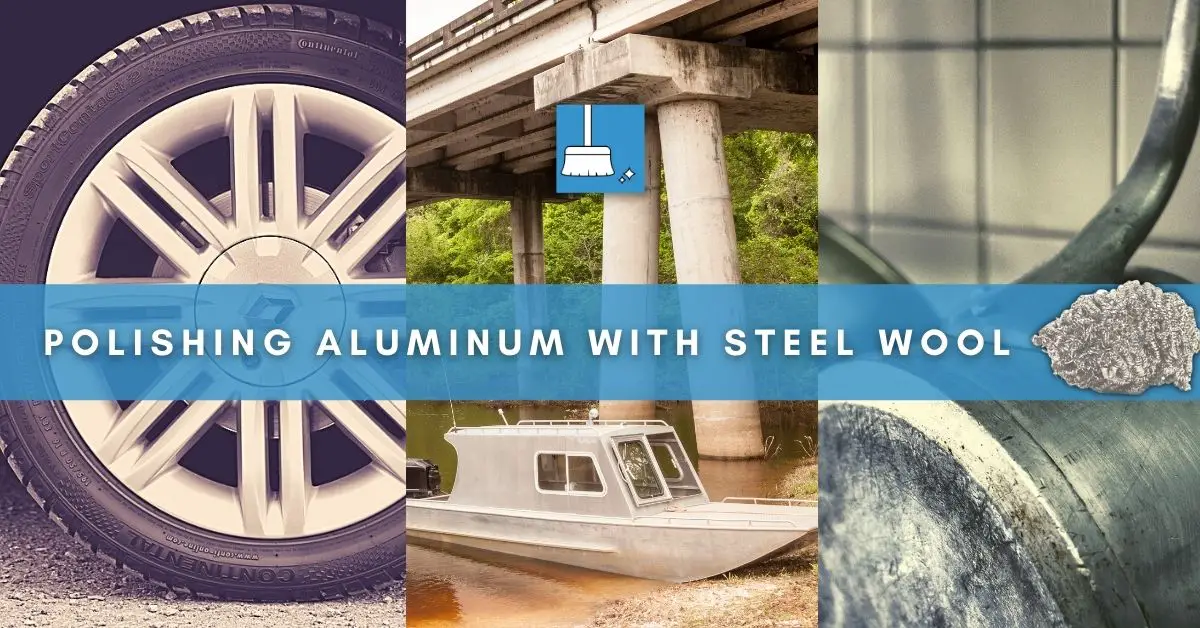Scotch Brite pads and several other 3M products are seen in almost all our homes. But can they be used on glass? We have glass in our windows, oven, stoves, fish tanks, etc and it would be so easy if we could give the glass a gentle scrub with our abrasive pads.
In this article, we will be looking at different kinds of glass and their compatibility with Scotch Brite. We will also discuss how best to clean glass and how to remove glass scratches.
Will Scotch Brite Scratch Glass?
Scotch Brite pads will scratch glass. Scotch Brite pads are advertised as being suitable for cleaning lots of materials like pots, dishes, walls, windshields, etc. but using them on the glass will leave marks behind.
Scotch Brite pads are made of polymer and abrasive materials like aluminum oxide and titanium oxide. (Source) These materials are coarse so if you use Scotch Brite on your glass, it will scratch the shine. It is best used for bare metal surfaces that don’t mind a swirl or two.
Cleaning your glass with steel wool or other safe materials is better unless you know how to remove scratches from glass and it’s a sport you enjoy.
Scotch Brite pads are color-coded and vary in their level of coarseness.
For example, we have white, light grey, green, maroon, brown, etc. White has between 1200-1500 grit, light grey has 600-800, Green has 600, Maroon has between 320-400 and brown 280-320.
Now, these have been listed in their order of coarseness, the white pad being the least course. White Scotch Brite pads are advertised as being safe on the glass as they have a finer grit but it is still not the best idea to use it on glass.
If you’re going to be cleaning a glass that isn’t all that dirty, you can try a white Scotch Brite pad. Don’t press too hard. And make sure you use a little water.
There are also different types of glass so while white pads may not harm one, they may harm another.
Let’s take a look at different glass surfaces/types and if Scotch Brite won’t harm them.
Can I Use a Scotch-Brite in My Aquarium?
You should not use Scotch Brite in your aquarium. First, it will scratch the glass, second, it contains chemicals that are harmful to your fish.
Like we said Scotch Brite pads are good home cleaning scrubbers but their abrasive nature makes them a no-no for glass surfaces.
If handled with care, you can use the white variant but it will still leave some scratches. And even if it doesn’t, it’s dangerous for your fish because it contains zinc and other compounds that are not fish-friendly.
The pads/sponge sometimes contain anti-bacterial or antimicrobial elements to prevent the growth of bacterial odor which is not good for fish.
Most Scotch Brite pads come with a warning written on the pack that it contains antimicrobial Stay fresh technology which is not for aquarium use. Even if yours doesn’t come with that warning, you should still avoid it.
If you have already cleaned your empty tank with a Scotch Brite pad and you intend to use it for the aquarium, you should soak it for a long time, and rinse it many times to get rid of the chemical residues.
Can You Use Scotch Brite on Oven Glass?
Scotch Brite pads can be used on Oven glass as ovens can get really dirty and spot some very stubborn stains so you would need something slightly abrasive that won’t scratch.
Several Scotch Brite non-scratch pads are perfect for cleaning oven glasses and won’t leave a mark. You should however avoid scratching too hard.
There are also special Scotch Brite pads that are specifically made for glass stovetops and oven glasses.
Just a little water or Windex and you can get even the toughest of dirt out of your oven glass.
When we use the oven, food particles, grease, dough, etc get splattered on the oven glass door, and the constant heat in the oven bakes and hardens them up. This makes it very tough to get rid of these particles.
Scotch Brite non-scratch pads can clean that in seconds because they are tough and they contain no chemicals so they are safe.
Will Scotch Brite Scratch Windshield?
Most front windshields are made of laminated safety glass which is subject to surface scratches. Whether it is non-scratch or not, Scotch Brite pads aren’t meant for cleaning windshields. Even white pads that are the least abrasive should be avoided. There are better and safer options.
If you have already done it, you will notice swirls, shallow scratches, and fog on your windshield which will make it very difficult to drive your car.
Fortunately, there are several materials you can use to get rid of scratches on glass. In a later part of this article, we will touch upon that.
How to Scrub Glass? (The Best Way!)
The best way to scrub your glass clean is to use a microfiber cloth with homemade cleaning solutions. They really work magic and leave no scratches.
Keep in mind a few things:
1- When mixing the solutions, use distilled water as it is less hard and do not leave streaks.
2- If you’ll be cleaning glass windows, don’t forget to put towels on the window sills to prevent water damage.
3- You can also use a razor blade to scrape stuck-on debris from the glass before cleaning, but don’t try it on oven glass and windshields. They can’t handle it.
YOU’LL NEED
1- Microfiber cloth
2- Towels
3- White vinegar
4- Rubbing alcohol
5- Baking soda
6- Water
7- Bucket
8- Squeegee
For Light Scrubbing
STEP 1: Get a bucket of warm soapy water and use a soft towel to apply the solution to the glass surface. Whether window, oven glass, fish tank, or anything else, use a squeegee to get rid of excess water.
STEP 2: Use a microfiber cloth to wipe it down. Don’t forget to start from the top of the window (or other glass surfaces), working your way down.
For Heavy Scrubbing
STEP 1: Prepare your cleaning solution. There are quite a few options:
A. You can use only vinegar with water. They should be an equal ratio.
B. You can also use rubbing alcohol with vinegar. This is best for getting rid of tough stains. 1 cup of rubbing alcohol, 1 cup of water, and 1 tablespoon of vinegar should be fine.
STEP 2: Pour the mixture into a spray bottle and spray your glass surface. Avoid spraying too much as this will give you streaks on your glass.
STEP 3: Use a microfiber cloth to wipe it down and change the cloth when it gets soaked. You have to wipe the window clean and dry.
For tough stains on oven glass, use a baking soda paste.
STEP 1: Make a paste of baking soda and apply it to the oven glass surface.
STEP 2: Use a cloth to scrub the oven glass paying attention to tough stains.
STEP 3: Rinse with water and use a microfiber cloth to wipe dry.
You can also use baking soda paste to remove glass scratches. Allow the paste to sit on the scratches for a few minutes. Wipe it off, rinse and then dry off.
A Cerium oxide paste can also be used instead of baking soda. It works better but it is more expensive.
How to Remove Scotch Brite Scratches from Glass?
Scratches on glass need to be dealt with as quickly as possible because they can develop into cracks that you wouldn’t want.
There are several ways of removing scratches from glass and some require only products that are readily available in the home.
How fast these scratches clear depends on how deep they are. Light scratches are easily removable and require less effort.
Method 1: Removing Glass Scratches with Toothpaste
This is the most common and the simplest method. Not all toothpaste will work. Ensure you get one that is non-gel and non-pigmented. The toothpaste must also contain baking soda and white toothpaste is preferable.
YOU’LL NEED
1- White Toothpaste
2- Warm water
3- Soft Cloth (2-3)
4- Microfiber cloth
STEPS
STEP 1: Wipe the glass with a cloth and warm water. Then dry it off with a soft cloth.
STEP 2: Put toothpaste on a slightly damp cloth and apply to the scratches on the glass in circular motions. Put a little pressure and do this for about 30 seconds.
STEP 3: Use a clean cloth to wipe the toothpaste off and the result will be a scratch-free and shiny glass.
Repeat the process if scratches are still evident. Do it until you are satisfied with the outcome.
Method 2: Removing Glass Scratches with Nail Polish
This method works well on deep and long scratches. Rather than removing them, nail polish hides the scratches perfectly.
YOU’LL NEED
1- Nail polish
2- Cloth (2)
3- Nail polish remover
STEPS
STEP 1: Clean the glass with a damp clean cloth and dry it off with another cloth.
STEP 2: Apply a thin layer of nail polish to the scratches on your glass. Allow it to sit for an hour.
STEP 3: Put a microfiber cloth on your finger and dip the finger into a nail polish remover or apply some to that finger. Use that finger to wipe off excess nail polish from the surrounding areas of those scratches.
That’s All!
Method 3: Removing Glass Scratches with Steel Wool
Not just any steel wool will be suitable. The grit must be #0000 and it must be new steel wool.
YOU’LL NEED
1- Steel Wool
2- Water
3- Microfiber cloth
STEPS
STEP 1: Use the new steel wool to rub the scratches on the glass in circular motions. Do this for a few minutes.
STEP 2: Rinse the glass with water and dry with a microfiber cloth. Repeat the process if necessary.
Other materials you can use to remove scratches from your glass include Car glass polish which is suitable for windshields, Metal polish that contains Cerium oxide, and Glass scratch remover kits which are sold in stores and online.
Final Thoughts!
Scotch Brite is abrasive and should not be used to clean glass. If used, the glass will become clean but you will notice a lot of scratches, depending on how much pressure you put while cleaning.
They do not only cause scratches on the aquarium, but they are also dangerous to your fish so avoid them in your fish tanks. Even if the Scotch Brite is non-scratch, it will still contain chemicals. There are better ways of scrubbing glass which we have explained.
Scratches on glass do occur even when we are careful. So we have also included different methods of removing glass scratches in the article.

